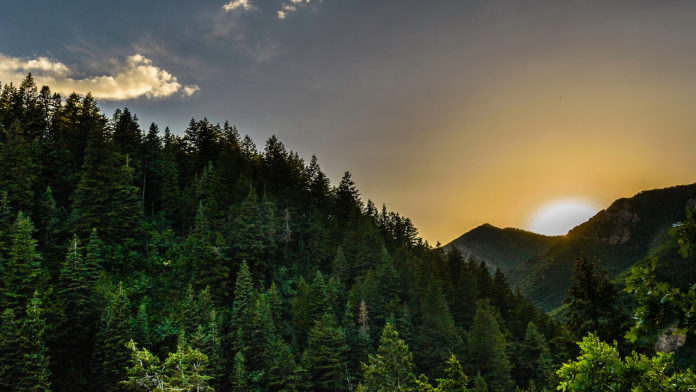Explore the vibrant tapestry of life in India with our in-depth guide on India’s Biodiversity. From the lush forests of the Western Ghats to the diverse ecosystems of the Himalayan foothills, discover the unique flora and fauna that make India a biodiversity hotspot. Uncover the delicate balance of ecosystems and the conservation efforts shaping the future of India’s natural wonders. Dive into the rich narrative of India’s biodiversity, where every species has a story.
Introduction
India is renowned for its incredible natural wealth, housing a vast array of flora and fauna. The sheer diversity found within this subcontinent is awe-inspiring. The combination of various ecosystems, climatic conditions, and geographical features has made India a haven for an incredible range of plant and animal species.
India’s Biodiversity
Flora in India
India boasts an impressive variety of flora. With approximately 47,000 plant species, it’s among the world’s top ten countries in terms of plant diversity. From the mighty banyan trees to the delicate lotus, the country’s landscapes are adorned with lush vegetation. The Western Ghats are home to numerous rare and endemic plant species, contributing to India’s diverse flora.
Fauna in India
When it comes to fauna, India is no less astounding. It’s home to a staggering 90,000 animal species, including Bengal Tigers, Asian Elephants, and Indian Rhinoceroses. The country’s national parks and wildlife sanctuaries provide refuge to these magnificent creatures, making wildlife tourism a significant attraction.
Biodiversity Hotspots
Western Ghats
The Western Ghats, a UNESCO World Heritage Site, is a biodiversity hotspot with its unique and varied ecosystem. It houses numerous plant and animal species found nowhere else on Earth. The Ghats also play a vital role in regulating India’s climate and rainfall patterns.
Eastern Himalayas
The Eastern Himalayas are another crucial hotspot, hosting a multitude of flora and fauna. This region is essential for the conservation of many endangered species, including the snow leopard and the red panda.
Conservation Efforts
Wildlife Sanctuaries
India has established a network of wildlife sanctuaries and national parks to protect its biodiversity. Prominent ones like Jim Corbett National Park and Periyar National Park are dedicated to the preservation of endangered species and their habitats.
Project Tiger
The government’s ‘Project Tiger‘ initiative has been instrumental in the conservation of Bengal Tigers. Established in 1973, it has significantly contributed to the recovery of tiger populations.
Cultural Significance
In India, the connection between culture and nature is profound. Various festivals and traditions are centered around the worship of trees, animals, and natural elements, reflecting the age-old bond between humans and the environment.
Ecological Balance
The rich biodiversity in India plays a crucial role in maintaining ecological balance. It contributes to clean air, fertile soil, and the overall well-being of the ecosystem. The interdependence of species is a testament to the intricate tapestry of life.
Threats to Flora and Fauna
Despite its natural marvels, India’s biodiversity faces significant threats, including habitat destruction, pollution, and poaching. Conservation efforts are essential to safeguard the country’s unique natural heritage.
Conclusion
India’s flora and fauna are not just a source of national pride but also a global treasure. The incredible range of species, ecosystems, and the cultural connection to nature make India’s biodiversity a subject of wonder and responsibility.
FAQs
- What makes India’s flora and fauna so remarkable? India’s remarkable flora and fauna are celebrated for their unparalleled diversity. The country is home to approximately 47,000 plant species and an astonishing 90,000 animal species. This richness can be attributed to India’s varied ecosystems, climate zones, and geographical features, making it one of the world’s top biodiversity hotspots.
- What are the main conservation efforts in place to protect India’s biodiversity? India has established a robust network of wildlife sanctuaries, national parks, and conservation initiatives to protect its precious biodiversity. Notable programs include ‘Project Tiger,’ which focuses on preserving Bengal Tigers, and ‘Project Elephant’ for the protection of Asian Elephants. Additionally, a variety of legislation and policies are in place to safeguard endangered species and their habitats.
- How can individuals contribute to the preservation of India’s diverse ecosystems? Individuals can make a significant difference by supporting conservation organizations, spreading awareness about the importance of biodiversity, and practicing responsible tourism when visiting natural habitats. Reducing waste, conserving resources, and participating in tree-planting initiatives are also meaningful ways to contribute to the preservation of India’s ecosystems.
- What are the key threats to India’s flora and fauna, and what can be done to address them? India’s biodiversity faces several threats, including habitat destruction, pollution, climate change, and poaching. To address these challenges, it is crucial to enforce stricter environmental regulations, promote sustainable land use, and engage in reforestation efforts. Raising awareness and educating communities about the importance of biodiversity conservation is equally vital.
- Are there any success stories in India’s biodiversity conservation that inspire hope for the future? Yes, there are several success stories in India’s biodiversity conservation. The revival of the Bengal Tiger population through ‘Project Tiger’ and the efforts to save the Indian Rhinoceros in Kaziranga National Park are shining examples of successful



